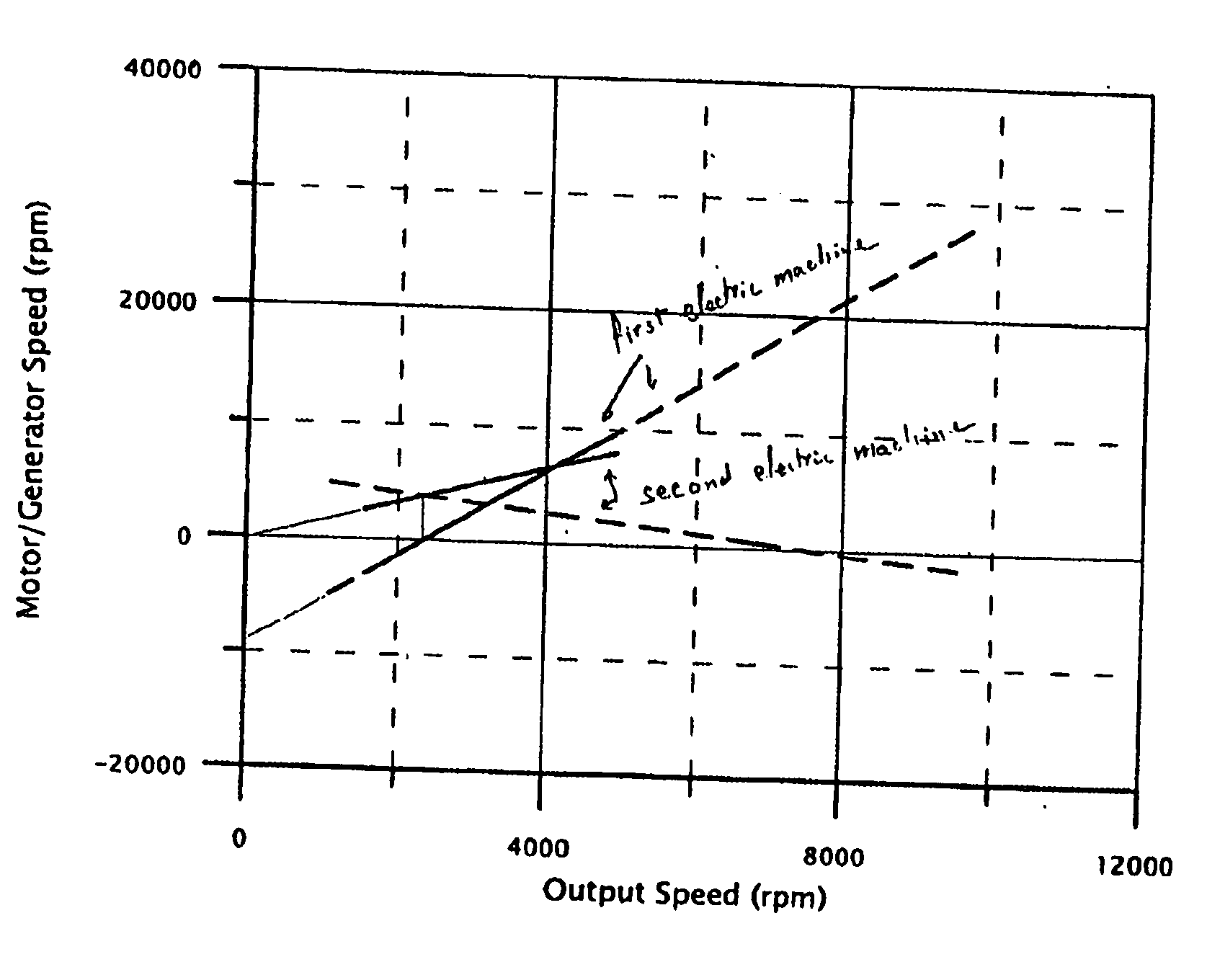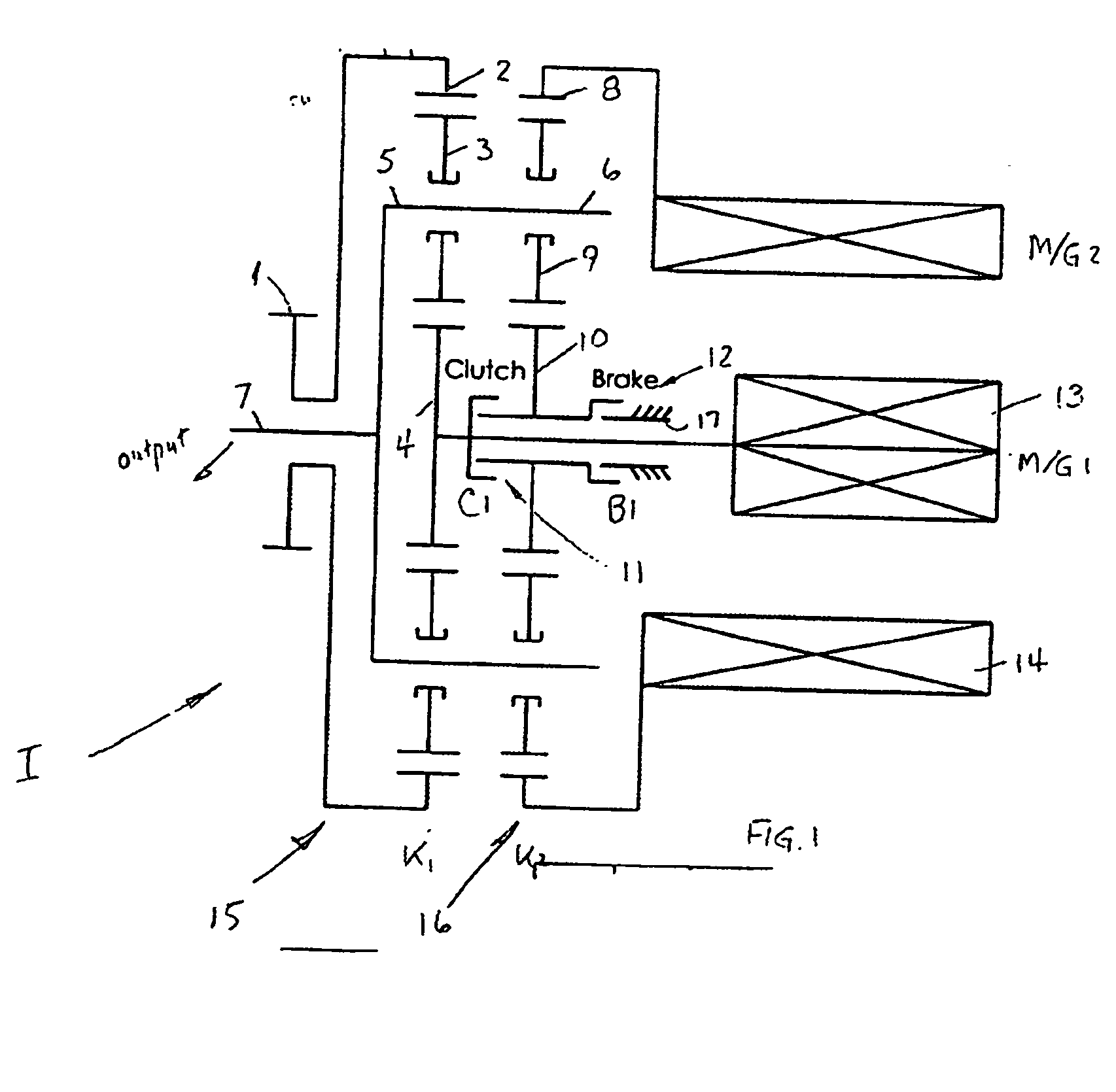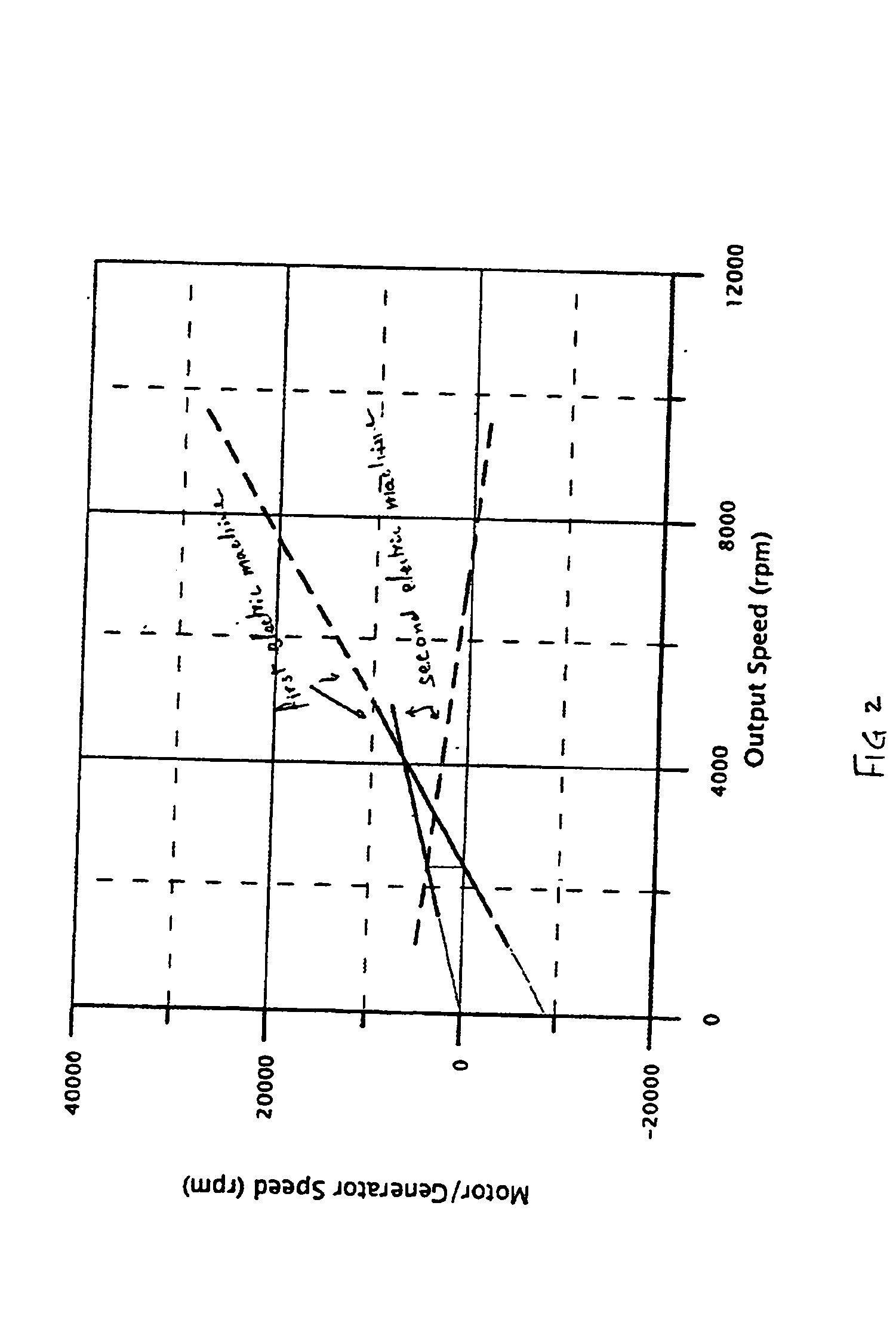Method and apparatus for power flow management in electro-mechanical transmissions
- Summary
- Abstract
- Description
- Claims
- Application Information
AI Technical Summary
Benefits of technology
Problems solved by technology
Method used
Image
Examples
Embodiment Construction
Referring to FIG. 1, an electric hybrid transmission I comprises first and second planetary trains 15, 16 each having a first and second sun member 4, 10, a first and second ring member 2, 8, a first and second plurality of planets 3, 9 and a first and second planet carrier 5, 6. An input means I is directly connected to the first ring member 2. An output means 7 is connected to the first planet carrier 5 and to the second planet carrier 6. A first electric machine 13 is connected to the first sun member 4, and a second electric machine 14 is connected to the second ring member 8. A locking clutch 11 selectively connects the first sun member 4 of the first planetary train 15 to the second sun member 10 of the second planetary train 16. A brake 12 selectively grounds the second sun member 10 of the second planetary train 16 to a fixed, non-rotational member 17 of the transmission I.
The first electric machine 13 is connected to the second electric machine 14 through a power-regulat...
PUM
 Login to View More
Login to View More Abstract
Description
Claims
Application Information
 Login to View More
Login to View More - R&D
- Intellectual Property
- Life Sciences
- Materials
- Tech Scout
- Unparalleled Data Quality
- Higher Quality Content
- 60% Fewer Hallucinations
Browse by: Latest US Patents, China's latest patents, Technical Efficacy Thesaurus, Application Domain, Technology Topic, Popular Technical Reports.
© 2025 PatSnap. All rights reserved.Legal|Privacy policy|Modern Slavery Act Transparency Statement|Sitemap|About US| Contact US: help@patsnap.com



